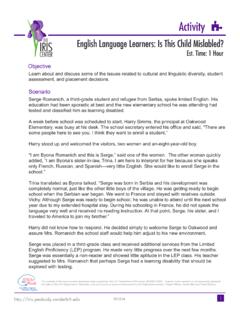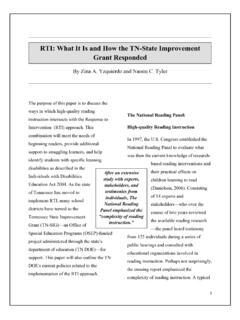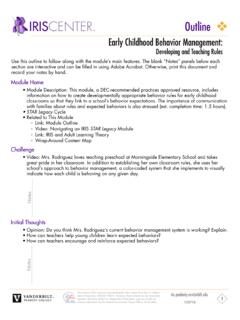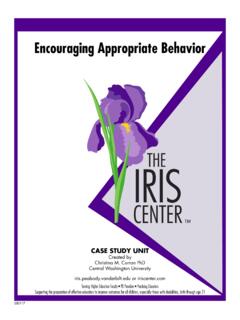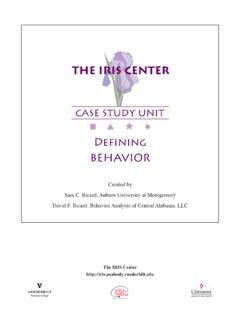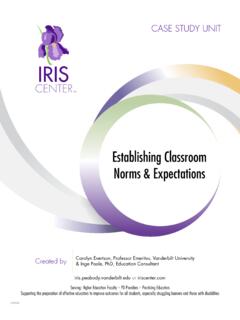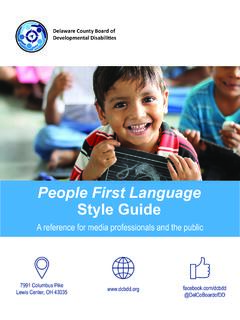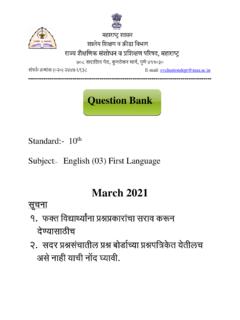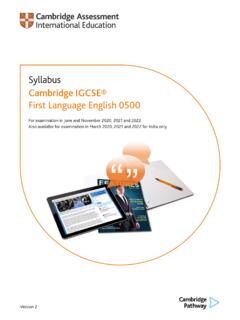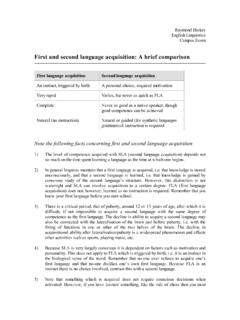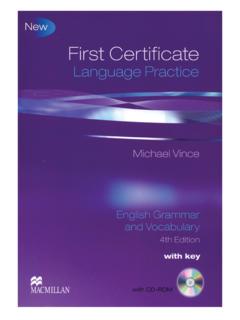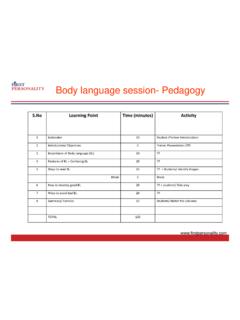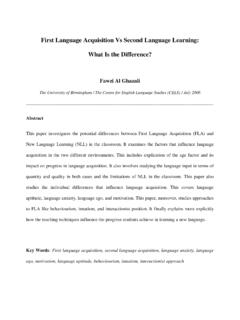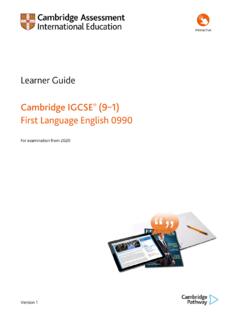Transcription of Disability Awareness: People-First Language Est. Time: 20 ...
1 Disability awareness : People-First LanguageEst. Time: 20 30 contents of this resource were developed under a grant from the Department of Education, #H325E170001. However, those contents do not necessarily represent the policy of the Department of Education, and you should not assume endorsement by the Federal Government. Project Officer, Sarah Allen . ActivityObjectiveGain a better understanding of the use of People-First Language when referring to individuals with disabilities and identify instances when inappropriate terminology is used to refer to those s important to keep in mind that the Language and terminology we use often reflect our beliefs, perceptions, and misconceptions in ways in which we may not always be consciously aware.
2 Many times, the use of a phrase or term can be demeaning, even if that was not the speaker s intent. People-First Language is a positive, respectful way to refer to individuals with disabilities. When we use People-First Language , we must take into account: Word order: When referring to a person with a Disability , the person comes first , his or her Disability second. Current terminology: As terminology evolves, a word or phrase that was acceptable at one point can take on a different connotation at another.
3 For example, one change is the use of intellectual and developmental Disability , cognitive Disability , or simply intellectual Disability to replace the now-outdated term mental retardation. Use of positive or neutral descriptions: Speakers should avoid terms and phrases that equate the person with the Disability or that carry negative connotations. It is also important to keep in mind that disabled is not a noun, and as such a person should not be referred to as the with any guidelines, there are exceptions.
4 The two most common refer to people with vision or hearing loss. In these cases, it is acceptable to refer to a deaf student (particularly those who use American Sign Language ASL and consider themselves members of the Deaf community) or a blind person. Similarly, many individuals with autism refer to themselves as autistic or as autistic t SaySay InsteadThe disabledA child who has a disabilityA learning disabled studentA student with a learning disabilityA person who suffers from cerebral palsyA person who has cerebral palsyIEP kidsA student who receives special education servicesA person confined to a wheelchairA person who uses a wheelchair2 ActivityDisability awareness .
5 People-First Language which of the terms below are acceptable and which are not. Suggest appropriate replacements for those that are unacceptable. Students with disabilities Wheelchair users A mentally retarded child Individuals with autism The deaf person Crippled students An epileptic A student with a speech impairment A child with a visual impairment A developmentally delayed toddler A hearing-impaired infant A student with ADHD2. Conduct a search of news stories about individuals with disabilities in a variety of formats (newspaper, magazine, Internet).
6 Note the use of appropriate and inappropriate other terms have you heard that refer to individuals with disabilities? Are these terms appropriate or inappropriate? In your search of news stories, what did you discover? Were you surprised by any of your findings? How important do you think it is that reporters use appropriate terminology? Explain your Imagine that, as a teacher, you overhear one of your students using an inappropriate term to refer to another student who has a Disability .
7 How would you respond and why?5. Reflect on your own day-to-day use of special education terminology. Does your current behavior reflect your belief in People-First philosophy? If not, what needs to change?For Your InformationNot every member of every group agrees with these terminology choices, and terminology will continue to change. But school personnel who are aware of these issues and who exhibit thoughtfulness and sensitivity when referring to individuals with disabilities can avoid offending students and their families.
